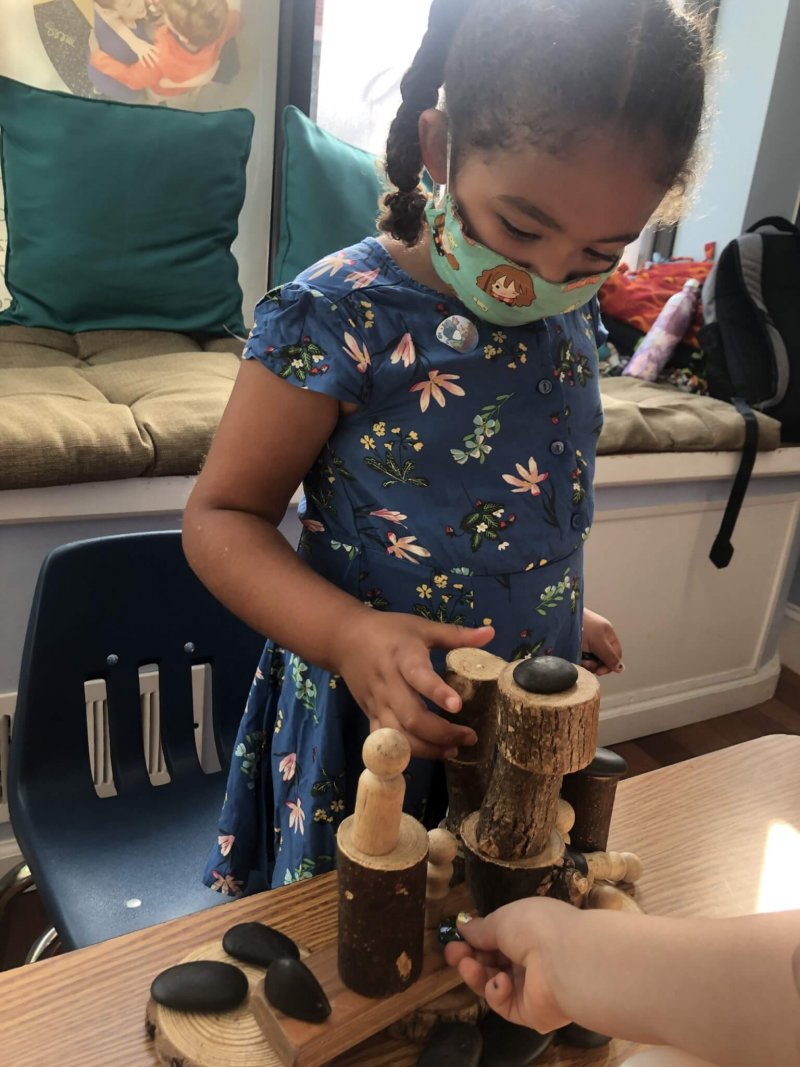
Last week it was time for a journey into the proverbial unknown (cue music). Well, not us so much, but Bnei Yisrael (the Jewish people). They’ve journeyed from slavery in Egypt to the boarder of the land of Canaan. God wants them to have at it and go into their new home, but they’re not quite ready for that. Instead they ask Moshe to send some scouts ahead of them to find out what the land was like. Let’s see what we found out just from the process of Bnei Yisrael choosing to send scouts.
As we began unpacking the story of the scouts that Moshe sent to explore the land of Canaan, the Shorashim (1st and 2nd graders) went on a pretend expedition of our own. We went out into the alley at the back of our building to observe all of the things that make it a great space, and some of the areas in which it is lacking. The Shorashim related this to the scouts’ expedition and the varied and contradictory reports they brought back. Back inside, we got to work on imagining what our own promised lands might look like. In their table groups, the kiddos drew what they would hope to find on their own expeditions to a new place. Drawings included:
- Treasure
- Pirate ships
- Candy
- Unicorns
- Rainbows
- Our own homes

The Nitzanim (3rd and 4th graders) used the story of the scouts as a jumping off point to explore different leadership styles. We noticed that Moshe and God have varying ways that they lead Bnei Yisrael, specifically the scouts that explore the land of Canaan. Moshe sends 12 scouts to go see what’s what, and 10 come back with a very negative report. The other 2 say that it’s not so bad, and it is indeed a land flowing with milk and honey.
A commentary from Rashi hypothesizes that actually Moshe is the one who decided to send the scouts in the first place, not God. The phrasing in the Torah – shlach lecha (send FOR YOURSELF) indicates to Rashi that God is simply giving reluctant permission to Moshe to send scouts rather than a command (Numbers 13:2). The Garinim (preK and K kiddos) had a great conversation about the difference between permission and commands or orders:
Gaby: If someone is giving you permission, do you have to do the thing?
Garinim: No!
Gaby: What if someone gives you an order, do you have to do it then?
Garinim: *mixed response*
Gaby: Why do you say no?
Garinim: Because other people don’t get to tell you what to do.
Gaby: Great! So even if something is phrased as an order, we can remember that we still have a choice to do it or not. There might be consequences for not following the order, but it’s still our choice, and you might realize that the consequences to following the order are worse! Like it could be unsafe, for instance. However, for the person giving the order, are they saying it like it’s something you have to do?
Garinim: Yes!

After parsing out that distinction, we played a Simon Says-like game where “Simon” gave instructions either as orders or as granting permission (ex: “spin in a circle” vs “you could lie down if you want to”). The participants needed to do what Simon said if Simon gave an order, but had the option to do the action or not if Simon was simply giving permission. At the end we reflected on which kinds of instructions they preferred:
- I liked getting permission more because the words were nicer.
- I liked getting orders because they were fun things to do!
- I liked orders because I like doing things that others tell me to do.
- I liked permission because I could do something but I didn’t have to.
- In general I like it when my sister gives me permission to do things because it means she’s not annoyed at me anymore.
- I like permission because I can do what I want.

Different leadership styles and ways of giving instructions can really affect how we learn. The Nitzanim explored this idea by creating towers out of Legos, however they wanted to. Their next task was to look at a tower that had already been built, and try to exactly recreate it. Some kiddos worked better when they had an opportunity to be more creative, and some worked better with more rigid instructions.
So, how can we as students advocate for ourselves when the leadership style that our teacher has chosen isn’t working for us?
- Talk to the teacher.
- Ask for more information if you don’t have enough.
- Ask the teacher for permission to do something different.
- Work with your group. If you like to be in charge, ask to be in charge. If you don’t want to be in charge, ask someone else to be in charge.
- Ask the teacher for some one-on-one time.

We noticed that these strategies are especially important when we are doing online schooling. It’s a lot more difficult to advocate for yourself when your teacher isn’t in the room, but still just as important.
We then talked about how we, as leaders, can make sure that everyone is getting what they need, even if what they need doesn’t exactly match up with our leadership style.
- Ask people what they need.
- Look around for what people are missing.
- Check in with people throughout the day to make sure everyone is okay.
- Check in at the beginning of the day and make yourself available during the rest of the day. Some people don’t like constant check-ins.
As both students and leaders, it seems like we’ve developed some awesome strategies to get what we need!
